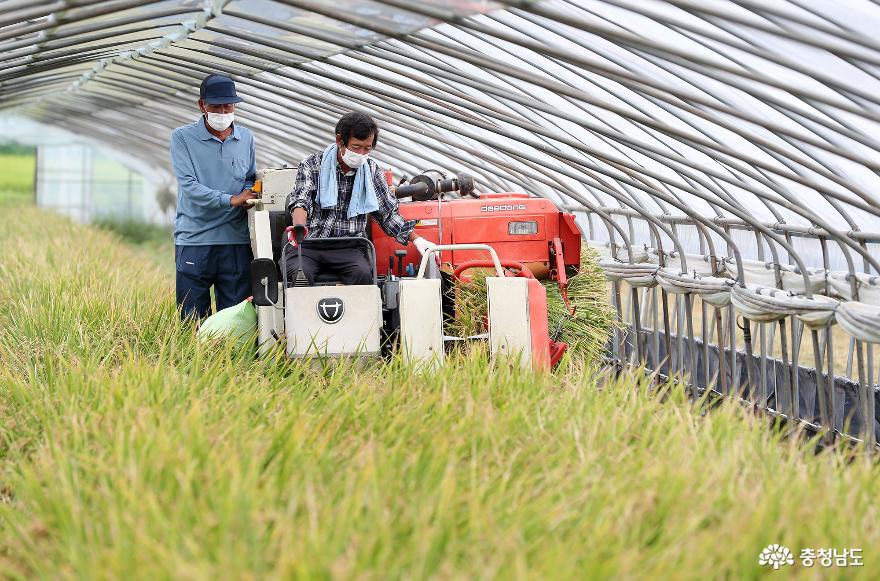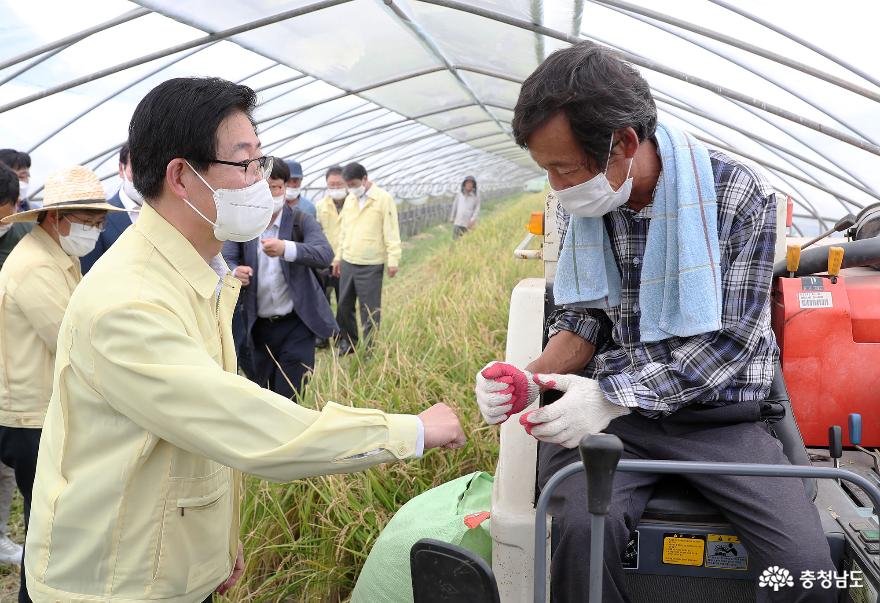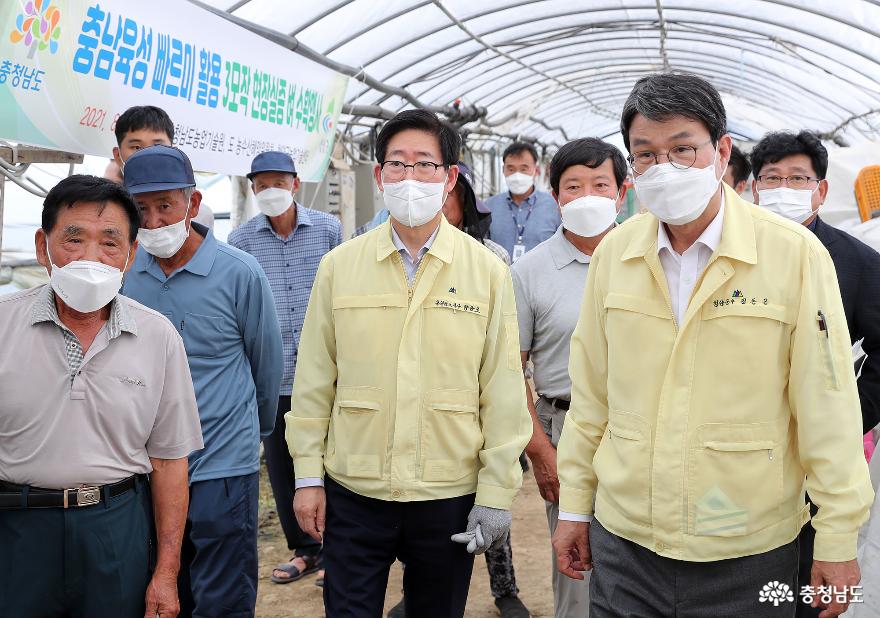About Chungnam
News
Opening the era of Korea’s first rice triple cropping
Chungnam Pparumi was harvested after 69 days in Cheongyang on August 25th
2021.10.05(화) 17:43:32 | CNnews (![]() chungnamdo@korea.kr)
chungnamdo@korea.kr)

▲ Opening the era of Korea’s first rice triple cropping 1
‘Chungnam Pparumi’ with the shortest growth duration among domestic rice varieties opens the triple cropping era in Korea.
Greenhouse facilities in Cheongyang and Buyeo completed two harvests of the Pparumi variety in the same lots and started a third crop, reducing damage from repeated cultivation and boosting farmers’ incomes.
The Agricultural Research and Extension Services of Chungcheongnam-do hosted the Pparumi rice harvest for triple cropping in greenhouse facilities on August 17th in Cheongyang and Buyeo with Governor Yang Seung-jo and farmers in attendance.
Greenhouse facilities in Cheongyang cultivated watermelon from January through May, and on June 9, seedlings of Pparumi were transplanted, and the crop was reaped in only 69 days.
On August 25, the second Pparumi was planted and will be harvested in mid-November, completing the tripling cropping .
This farm had cultivated watermelon in spring, then planted rice and reaped it in October.
Greenhouse facilities used to cultivate tomatoes from October until May had the seedlings of Pparumi transplanted on May 25.
In 84 days, the harvest was completed, and on the third day of the next month, cucumbers will be planted, and they are expected to be harvested in mid-December.
Greenhouse facilities in Buyeo conduct two or three crops a year, cultivating tomatoes from October through May, and melons from June through September (two crops); watermelons from January through May, melons from June through September, and water melons from October through December (three crops).
However, triple cropping in greenhouse facilities has backfired, leading to damage from repeated cropping.
The accumulation of salts, like fertilizers, within greenhouse facilities’ soils has been the most significant headache for farmers.
The continuous use of pesticides and fertilizers causes salts to build up in the ground, reducing crop yields, hurting product quality, and reducing the farmers’ income.
Solutions to accumulated salts in soils include desalinization with water, soil addition, catch crop cultivation, topsoil removal, and the use of microorganism products. Notably, the effect of desalinization through rice cultivation is estimated to be 85% effective, the highest level.
However, the cultivation of general rice varieties is not feasible because the fallow period between crops is only two to three months.
Therefore, farmers operating greenhouse facilities do not cultivate rice, only filling the soil with water or even when rice is planted, plow to grow subsequent crops.
Dr. Yun Yeo-tae, who developed the Pparumi rice variety, said, “For greenhouse facilities, the best way to remove accumulated salts is to cultivate rice between crops, but farmers are abusing lands by continuously cropping because rice usually requires a longer growth period, deteriorating the quality and quantity of harvested crops, reducing the income for the input of the same labor and materials.”
Pparumi can be reaped in about 70 days in the greenhouse facilities of Cheongyang and thus can be grown during short fallow periods.
In the fallow period between the cultivation of crops, Pparumi rice can be grown to improve the soil and enhance the quality and quantity of crops, boosting rural income.
Furthermore, harvested Pparumi can be sold at a relatively high price.
Currently, Pparumi rice is sold at KRW 5,925 per kg in large discount markets online, and offline nationwide and is KRW 1,000 per kg higher in price than general varieties of rice produced last year in the province.

▲ Opening the era of Korea’s first rice triple cropping 2

▲ Opening the era of Korea’s first rice triple cropping 3
At the event, Governor Yang said, “Pparumi rice is the first variety allowing harvest in early July and two crops a year, and even triple cropping at greenhouse facilities, symbolizing the innovation and frontier spirit of agricultural policy of Chungnam.”
Yang added, “By disseminating Pparumi as the pride of Chungnam, we will support farming households and farmers, building a happy Chungnam.”




